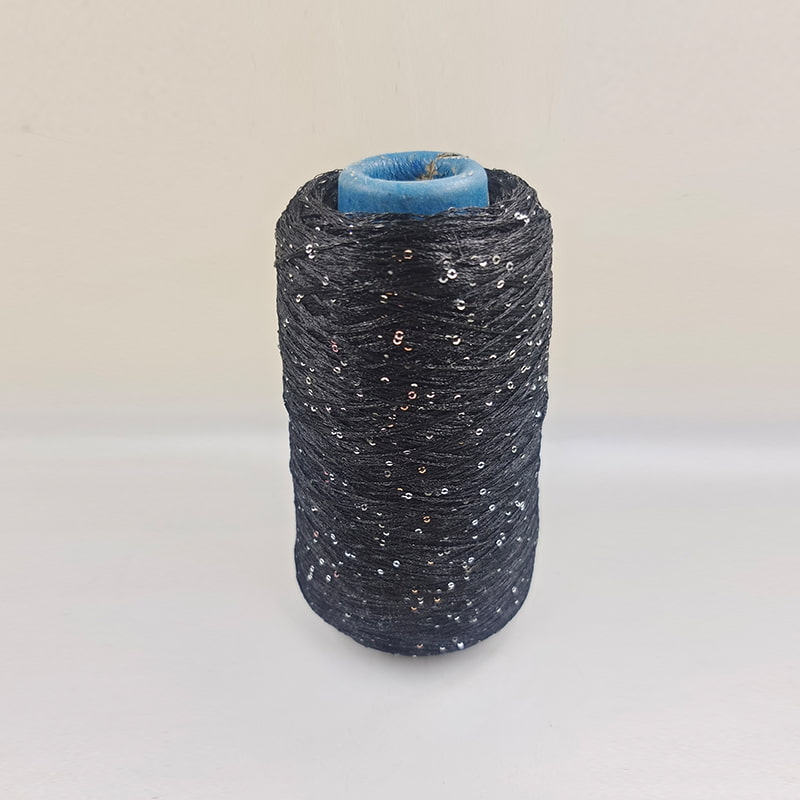“The company adheres to the business philosophy of 'You Win, I Win' ”
Cotton Yarn:
Texture: Cotton yarn has a soft and breathable texture, while polyester spun yarn might feel slightly smoother and less breathable.
Absorbency: Cotton yarn is highly absorbent, making it suitable for items like towels and dishcloths. Polyester spun yarn is less absorbent.
Strength: Polyester spun yarn tends to be stronger and more durable than cotton yarn.
Shrinkage: Cotton yarn may shrink more when exposed to heat, while polyester spun yarn is less prone to shrinking.
Dyeing: Cotton yarn is known for accepting dyes well, while polyester spun yarn also takes dye effectively and retains color well.

Wool Yarn:
Warmth: Wool yarn provides excellent insulation and warmth, making it ideal for cold weather items. Polyester spun yarn is generally less insulating.
Texture: Wool yarn has a natural crimp and can feel coarser compared to the smooth texture of polyester spun yarn.
Moisture Wicking: Wool yarn has natural moisture-wicking properties, whereas polyester spun yarn may not manage moisture as effectively.
Allergies: Some individuals may be allergic to wool fibers, making polyester spun yarn a hypoallergenic alternative.
Ease of Care: Polyester spun yarn is often easier to care for and can withstand machine washing better than some types of wool yarn.
Acrylic Yarn:
Texture: Both polyester spun yarn and acrylic yarn have a smooth texture, but acrylic yarn can sometimes feel softer and more lightweight.
Warmth: Acrylic yarn provides warmth similar to wool, while polyester spun yarn is generally less warm.
Durability: Polyester spun yarn is typically more durable and resistant to stretching than acrylic yarn.
Pilling: Acrylic yarn can be prone to pilling (forming small balls of fuzz), whereas polyester spun yarn is less likely to pill.
Color Retention: Both yarns retain color well, but polyester spun yarn may have slightly better colorfastness.
Blended Yarns:
Combination of Properties: Blended yarns combine the characteristics of different fibers, allowing for a mix of textures, warmth, and durability. Polyester spun yarn can be blended with other fibers to achieve specific properties.
Versatility: Blended yarns offer a balance of features from different fibers, catering to a wide range of applications.

 English
English Español
Español.jpg?imageView2/2/w/800/h/800/format/webp/q/75)
.jpg?imageView2/2/w/800/h/800/format/webp/q/75)
.jpg?imageView2/2/w/800/h/800/format/webp/q/75)
.jpg?imageView2/2/w/800/h/800/format/webp/q/75)
.jpg?imageView2/2/w/800/h/800/format/webp/q/75)
.jpg?imageView2/2/w/800/h/800/format/webp/q/75)
.jpg?imageView2/2/w/800/h/800/format/webp/q/75)
.jpg?imageView2/2/w/800/h/800/format/webp/q/75)
.jpg?imageView2/2/w/800/h/800/format/webp/q/75)
.jpg?imageView2/2/w/800/h/800/format/webp/q/75)
.jpg?imageView2/2/w/800/h/800/format/webp/q/75)
.jpg?imageView2/2/w/800/h/800/format/webp/q/75)

